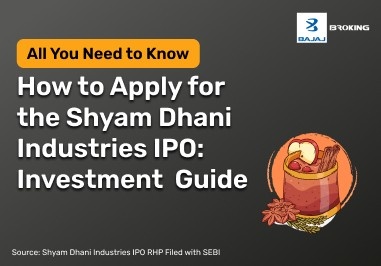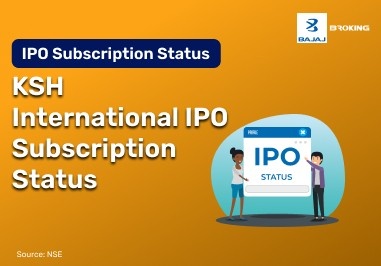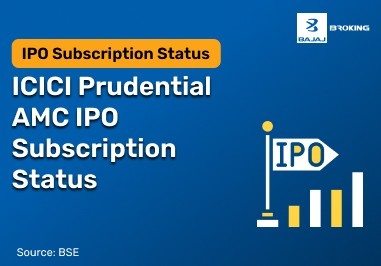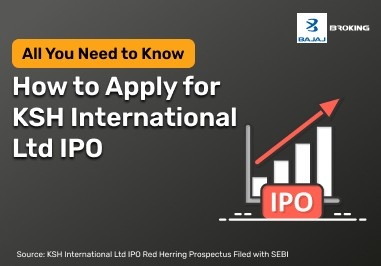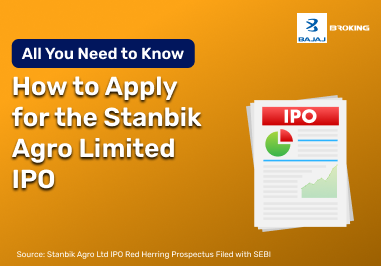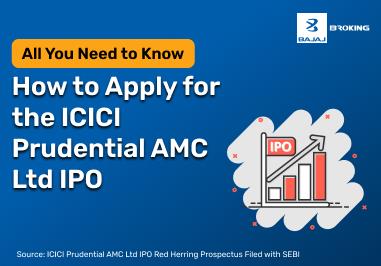In this article, we will explore:
The fundamentals of high frequency trading
How high frequency trading operates in financial markets
The key advantages of high frequency trading
Potential risks and concerns associated with high frequency trading
Common strategies employed in high frequency trading
What Is High-Frequency Trading (HFT)?
High-frequency trading is a variant of stock trading that is characterised by high-speed execution of a large number of transactions. This type of trading revolves around extremely powerful computers and low-latency networks that leverage processing and transmitting speed to facilitate swift and high-volume trading. HFT is algorithm-driven and requires significant infrastructure - mechanical and human capital-wise. As such, this trading methodology is largely deployed only by institutional investors and large fund houses. This trading variant’s main aim is to capitalize on minor price variations or changes in the market. When done right, traders can profit significantly through these variations with the help of HFT.
High frequency trading is a variant of stock trading that is characterised by high speed execution of a large number of transactions. This type of trading revolves around extremely powerful computers and low latency networks that leverage processing and transmitting speed to facilitate swift and high volume trading. Hft trading is algorithm driven and requires significant infrastructure - mechanical and human capital wise. As such, this trading methodology is largely deployed only by institutional investors and large fund houses.
History and Evolution of HFT
After NASDAQ brought full-fledged electronic trading to the fore in 1983, high-frequency trading also advanced. Though in the early 2000s, HFT saw less than 10% contribution in equity orders, its demand grew tremendously from there. The 2001, HFT saw its execution time becoming faster and more rapid and it just kept getting better from there with executions taking only a few seconds to be executed.
From the year 2005 to 2009, the trading variant grew by 164% in trading volume. In 2010, HFT order execution time had reduced to milliseconds and by the end of the year, the time had gone on to become microseconds. Then came 2012, when HFT volume grew to a great extent and the execution time time for the trade went to nanoseconds.
How High-Frequency Trading Works?
With complex algorithms behind its working, high-frequency trading triggers huge volumes of transactions in response to the market reaching certain levels on predefined parameters. In HFT, individual securities are consistently assessed to detect even the most minute of trends and benefit from it through high-speed and bulk transactions.
Although the changes that trigger such trades may be minute and seemingly insignificant, the sheer volume of transactions in HFT amplifies the overall profit. To make high-frequency trading possible, substantial investment in technological infrastructure is a prerequisite.
At the foundation of high frequency trading are complex algorithms designed to trigger huge volumes of transactions in response to the market reaching certain levels on predefined parameters. In high frequency trading, individual securities are consistently assessed to detect even the most minute of trends and benefit from it through high-speed and bulk transactions.
Although the changes that trigger such trades may be minute and seemingly insignificant, the sheer volume of transactions in high frequency trading amplifies the overall profit. To make high frequency trading possible, substantial investment in technological infrastructure is a prerequisite.
Pros and Cons of High-Frequency Trading
There are several reasons why HFT has been gaining traction. Listed below are some of the main pros and cons of the trading variant:
Pros:
- Leveraging small price movements: HFT lets traders benefit from the smallest of changes in the price of a security. Since the entire process of order triggering and placement is automated, it is possible to place a significant number of trade orders in a matter of seconds, something that is not feasible with human effort.
- Enhancing market liquidity: High-frequency trading is considered to have a positive impact on market liquidity. Owing to the constant analysis of price movements and other relevant market data accompanied by the automatic triggering of a large number of orders, the overall liquidity in the market is increased. This is how HFT reduces the spread between bid and ask prices, thereby raising the price efficiency of the market.
- Tapping arbitrage opportunities: Another significant advantage of high-frequency trading is that it facilitates the identification of arbitrage opportunities. Through platforms that offer HFTs, the difference in the prevailing market prices of a particular security in separate stock exchanges can be automatically detected. Consequently, the need to buy and sell orders can get automatically triggered by the trading variant’s algorithm, and the trader can benefit from the price difference.
Cons
- Firstly, the time horizon for HFT is minimal and the corresponding trade volume is high, a combination which is construed to increase market volatility.
- Secondly, the requirement of extremely expensive technology makes the scope of HFT limited to large fund houses and financial institutions, thereby tilting the scale of the markets unfairly in their favour.
- Thirdly, there are widespread ethical dilemmas surrounding high-frequency trading. The argument that HFT results in ghost liquidity or extremely short-lived liquidity that can only be tapped by trading platforms and not by other investors makes the methodology a moral grey area. Furthermore, high-frequency trading has been found to result in market instability and crashes in several instances. This is exacerbated by the incidents of high-frequency traders manipulating the market.
There are several reasons why high-frequency trading has been gaining traction. Here are the major benefits of high frequency trading:
- Leveraging small price movements: With high-frequency trading, traders can benefit from the smallest of changes in the price of a security. Since the entire process of order triggering and placement is automated, it is possible to place a significant number of trade orders in a matter of seconds, something that is not feasible with human effort.
- Enhancing market liquidity: High frequency trading is considered to have a positive impact on market liquidity. Owing to the constant analysis of price movements and other relevant market data accompanied by the automatic triggering of a large number of orders, the overall liquidity in the market is increased. High frequency trading can, therefore, reduce the spread between bid and ask prices, thereby raising the price efficiency of the market.
- Tapping arbitrage opportunities: Another significant advantage of high-frequency trading is that it facilitates the identification of arbitrage opportunities. Through a high-frequency trading platform, the difference in the prevailing market prices of a particular security in separate stock exchanges can be automatically detected. Consequently, the required to buy and sell orders can get automatically triggered by the high frequency trading algorithm, and the trader can benefit from the price difference.
Future of High-Frequency Trading
There is no doubt that HFT will continue to evolve. Everything from AI and machine learning will have a positive impact on its growth. To add to this, the constant increase in the globalisation of the market worldwide will aid in its growth too.
Having revolutionized the art of trading, high-frequency trading also has its fair share of benefits and challenges. However, by understanding how it has grown over the years, we will also be able to understand where it is headed because the future certainly does look bright for this trading variant.
High frequency trading has its fair share of disadvantages, risks, and ethical predicaments. Firstly, the time horizon for high frequency trades is minimal and the corresponding trade volume is high, a combination which is construed to increase market volatility. Secondly, the requirement of extremely expensive technology makes the scope of high frequency trading limited to large fund houses and financial institutions, thereby tilting the scale of the markets unfairly in their favour.
Thirdly, there are widespread ethical dilemmas surrounding high frequency trading. The argument that high frequency trading results in ghost liquidity or extremely short-lived liquidity that can only be tapped by trading platforms and not by other investors makes the methodology a moral grey area. Furthermore, high frequency trading has been found to result in market instability and crashes in several instances. This is exacerbated by the incidents of high frequency traders manipulating the market.
High-Frequency Trading (HFT) provides a host of advantages, notably the ability to conduct a large volume of transactions at high speeds, making it a valuable tool for institutional investors and banks. By automating transactions, HFT trading improves market liquidity and removes smaller bid-ask spreads, ultimately benefiting the overall market structure. However, HFT high frequency trading also presents challenges. The removal of human decision-making can lead to unintended market volatility, as rapid transactions might trigger significant market movements without rationale. Additionally, the liquidity offered by HFT is often fleeting, making it difficult for other traders to capitalize on it fully.
HFT trading provides numerous advantages for market efficiency, but it also introduces challenges that traders and regulators must carefully manage.
Major HFT High Frequency Trading
The methodology of high frequency trading revolves around certain trading strategies which facilitate the identification of price movements within and across stock exchanges. Here are some of the prominent strategies of high frequency trading:
Market making
This high frequency trading strategy entails the quoting of buy and sell prices for a security in a loop so as to benefit from the buy-sell spread.
Momentum trading
The key aim of this high frequency trading strategy is to detect the trends associated with a particular security in the short run, and place buy and sell orders to benefit from those trends.
Statistical arbitrage
This high frequency trading strategy is aimed at identifying and leveraging the price discrepancies between securities that ought to be priced at a similar level.
Risks of High-Frequency Trading
While high frequency trading enhances market efficiency, it carries risks that can impact stability. These include regulatory concerns, operational failures, and model inaccuracies, all of which can lead to significant financial challenges. The rapid execution of trades can also amplify volatility, making markets more unpredictable for investors and increasing the likelihood of sudden price fluctuations.
Regulatory Risks
High frequency trading faces regulatory scrutiny due to concerns about market fairness. Critics argue that it provides large firms with an unfair advantage, enabling manipulative tactics like spoofing and layering. To mitigate these risks, regulators impose restrictions and monitoring mechanisms to ensure transparency and prevent potential market distortions.
Operational Risks
The automated nature of high frequency trading makes it highly dependent on technological infrastructure. Any system failure, connectivity issue, or unexpected downtime can lead to missed trading opportunities or severe financial losses. Even minor latency issues in executing trades can result in firms losing their competitive edge in the market.
Model Risks
High frequency trading relies on complex mathematical models to make split-second decisions. However, these models may fail in unpredictable market conditions, leading to significant trading losses. Incorrect assumptions or flawed algorithmic strategies can amplify market volatility and even contribute to financial crises, as seen in past flash crashes.
To sum it up
Although high frequency trading enables the execution of large volumes of transactions in an automated manner, it is a subject of constant debate and disagreement between various stakeholders in the market. The ethical predicaments associated with high frequency trading as well as the substantial capital investment required to operationalise it make its scope significantly limited.
Do you have a trading account app or demat account app?
You can open an account with Bajaj Broking in minutes.
Download the Bajaj Broking app now from Play Store or App Store.
Disclaimer: Investments in the securities market are subject to market risk, read all related documents carefully before investing.
This content is for educational purposes only. Securities quoted are exemplary and not recommendatory.
For All Disclaimers Click Here: https://www.bajajbroking.in/disclaimer

